Old Calcutta’s temple trail, a cultural odyssey
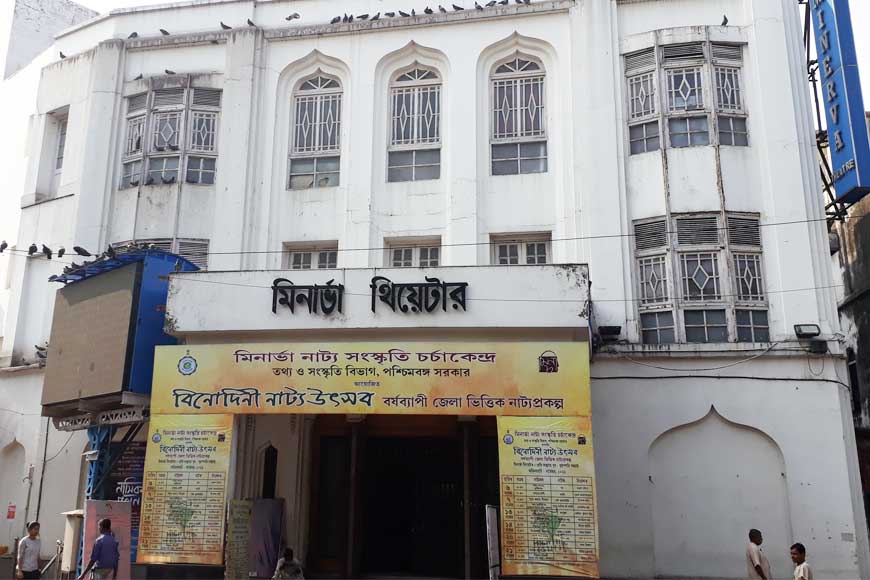
Minerva Theatre
This week’s walk may well be called the ‘temple trail’, because though it is a continuation of our Chittaranjan Avenue saga, it takes in some of Kolkata’s oldest and most popular temples. And a few other interesting locations. If you remember, we had ended our last trip at Marble Palace on Muktarambabu Street, from where you walk back to C.R. Avenue and turn left as we continue on our trail.
As you turn left, you will see the very impressive Seth Surajmal Jalan Smriti Sadan, constructed in 1941, on the opposite side of the road. Walking along further, you will cross Baranasi Ghosh Street, once the address where stood the residence of Kaliprasanna Singha (1840-70), one of the leading lights of the Bengal Renaissance. At the crossing of Vivekananda Road and C.R. Avenue is Girish Park, named after legendary stage actor Girish Chandra Ghosh (1844-1912), one of the pioneers of Bengali theatre.
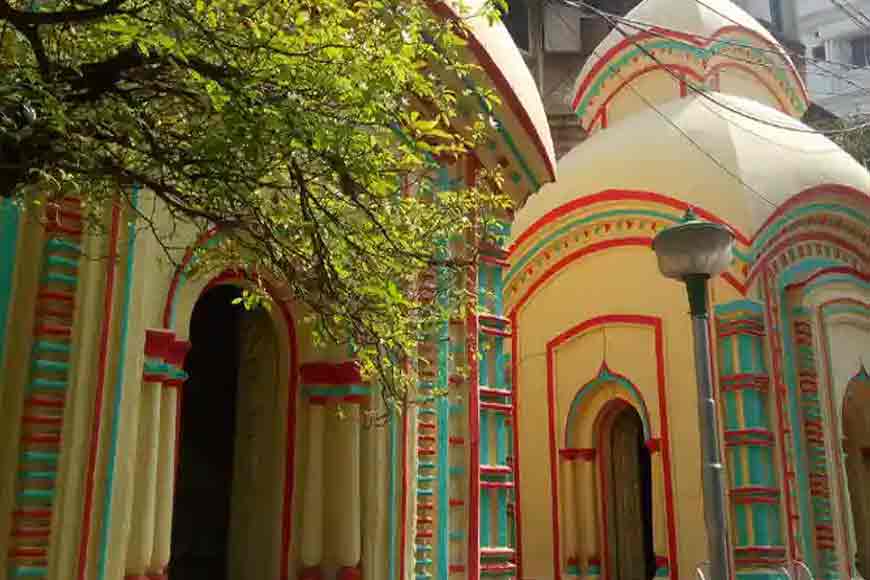
Point A - Jora Shibmandir (Twin Shiva temples), Minerva Theatre
Walking along from Girish Park, you will come to Garanhata Road, apparently so named because this area was once full of ‘garan’ trees, native to the Sundarbans mangrove forests. Where the street turns into Jadu Pandit Lane is a T-junction, to the left of which are the twin temples, incongruously surrounded by small welding factories. The temples, in the typical Bengali ‘aatchala’ style, were reportedly built by Panchanan Dutta in or around 1803.
Walk back to C.R. Avenue and turn left onto Beadon Street, named after Sir Cecil Beadon, the Lieutenant Governor of Bengal from 1762-67. This is the street on which stands Minerva Theatre, one of the jewels in the crown of the Bengali stage. Before you come to the theatre, you will see Sri Chaitanya Library, a very old and reputable publishing house. When you come to Minerva, go inside if you can, and take in the elegant marble interiors, as well as the walls adorned with photographs of Bengal’s stage icons. Originally constructed in 1893, Minerva was revamped in 1922, and the surrounding neighbourhood is still redolent of bygone eras. Walk around the area, and make a special note of Raja Gurudas Street, named after the only son of the ill-fated Maharaja Nandakumar. Gurudas was also a Dewan of Nawab Mubarak-ud-Daula, and died in 1792.
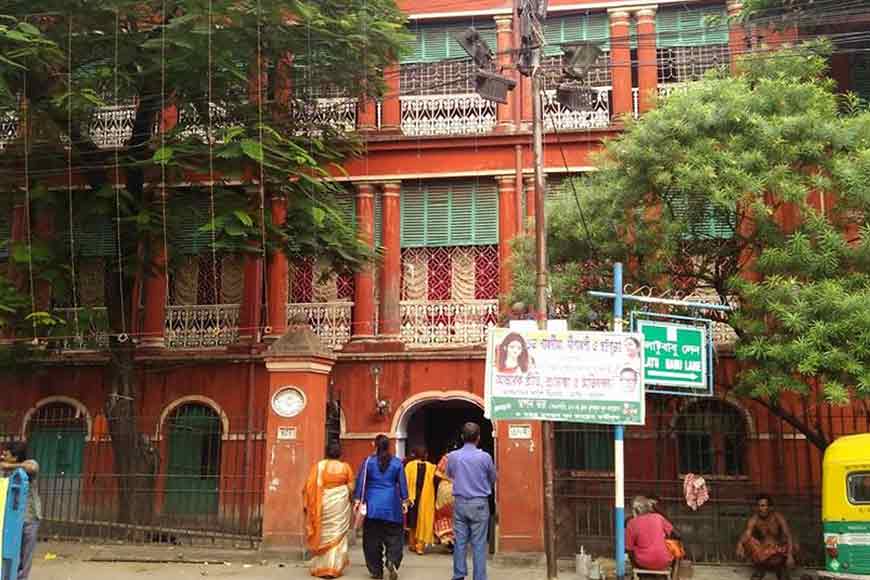
Point B - Ramdulal Dey’s Natmandir
Crossing the road from C.R. Avenue to Beadon Street Post Office, you will come upon the Natmandir built by Ramdulal Dey (also known as Ramdulal Sarkar), a business magnate born in the early 1750s and known as a pioneer of Indo-American trade. Indeed, his American counterparts held him in such high esteem that they even named a trading vessel after him. And so successful was the trade that George Washington, the first President of the USA, ordered that Calcutta was to house the first US Consulate in India, which opened on November 19, 1792.
The houses that Ramdulal built no longer exist, but the natmandir does. His descendants still live in the more modern constructions that have replaced the older mansions. Near the natmandir are two early 19th-century temples said to have been built by and named after Ramdulal’s equally famous sons - Chhatubabu (Ashutosh) and Latubabu (Pramatha), elevated to mythic status thanks to their extravagant lifestyles.
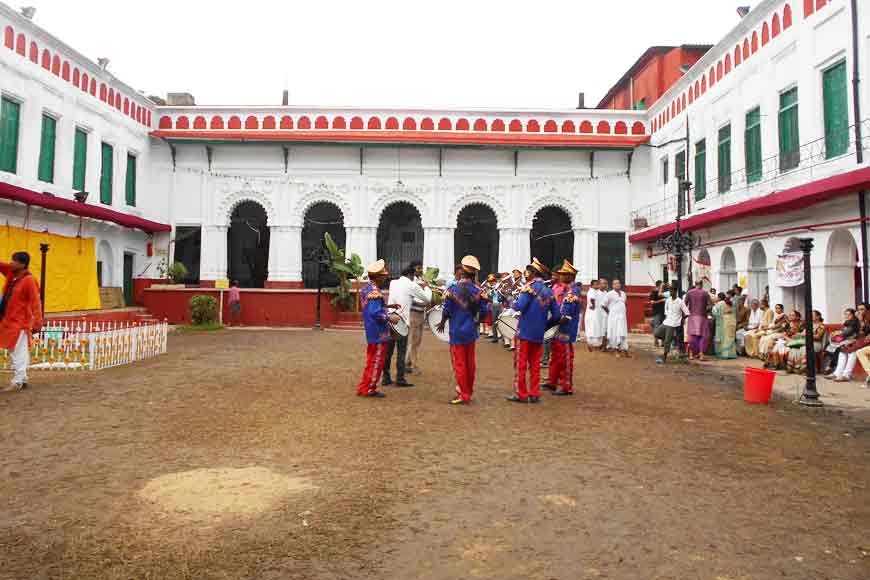
Point C - Sovabazar Rajbari
Arriving at the Grey Street crossing, you will see the famous Putiya Kali temple, which was built in 1894 if the plaque at the entrance is to be believed, though local residents insist it is at least 200 years old, if not older. To the right of this temple, which stands literally in the middle of the road, is Raja Nabakrishna Deb Street, on which stands the Sovabazar Rajbari or Rajbati, home to the Deb family for centuries. Raja Nabakrishna (1733-97) who founded the family, was the son of Ramcharan, a former Dewan of Cuttack. Beginning his career as an employee of wealthy businessman Lakshmikanta ‘Naku’ Dhar, Nabakrishna secured an introduction to Robert Clive and became his munshi, or Persian and Bengali tutor. Soon, he had graduated to the position of Clive’s close confidante, and in 1765 was awarded the title of ‘Raja’ by Mughal Emperor Shah Alam. In 1768, he was made a ‘talukdar’ of the Sutanuti area.
Talukdars or Taluqdars were hereditary aristocrats who became part of the ruling class under the Sultanates of Delhi and Bengal, as well as the Mughal Empire. Their power and influence continued in British times, and they remained owners of vast tracts of land, from which they were responsible for collecting taxes.
Read the earlier episodes of our walk :
Enjoy the lockdown with your very own customised Kolkata Walk
A little bit of BBD Bag, a whole lot of Calcutta
Esplanade, the beating heart of old Calcutta
The places of worship in old Calcutta, and what we learn from them
Walk on for a perfect balance of religion and commerce
On the waterfront: a walk along the Hooghly
Walking around the ‘native’ palaces of Kolkata
A walk down Sealdah and Bowbazar, among the oldest areas of Kolkata
Walking through the centre of Kolkata
The Sovabazar Rajbari is in two sections - one belonging to Gopimohan, the adopted son of Nabakrishna, and later used by Raja Radhakanta Deb, Nabakrishna’s grandson. The ‘thakurdalan’ is still an impressive sight, and bears witness to many landmark events in the history of Bengal, such as the first public reception accorded to Swami Vivekananda following his return from Chicago in 1897. The thakurdalan where the famed Durga Puja is still held is the venue where Raja Nabakrishna held among the first ‘sarbojanin’ or public Durga Pujas of Calcutta, to which the British were invited in large numbers, and the adjoining natmandir became the venue for some truly spectacular entertainment in honour of the sahibs.
Raja Radhakanta has come down to us as an ultra conservative Hindu for his trenchant support of the horrendous practise of ‘sati’, but he was also a renowned scholar and social reformer who supported the cause of women’s education and publicly stood by Bengal’s severely oppressed indigo farmers.
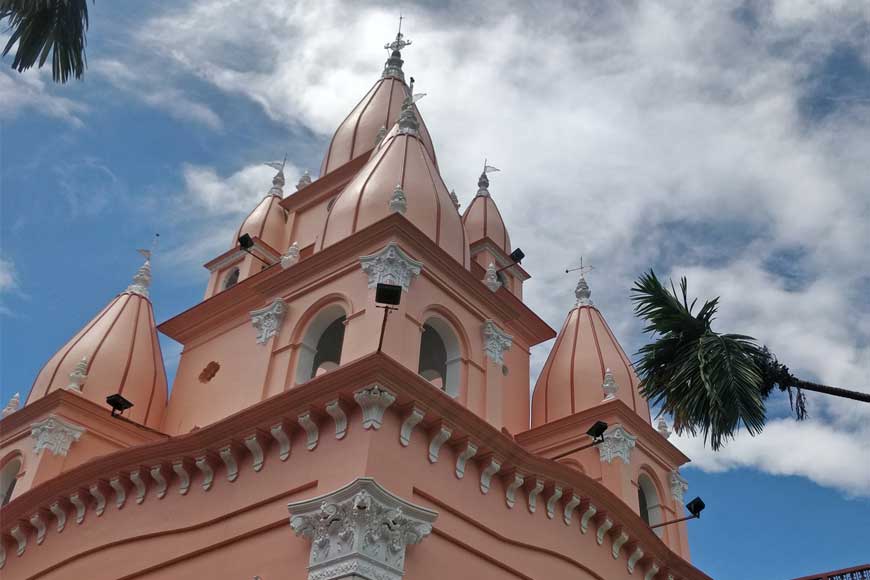
Point D - Naba Brindaban Temple, Madanmohan Temple
Walking down Jatindra Mohan Avenue from Sovabazar Rajbari, turn right on to Bhupen Bose Avenue, and walk on until you arrive at Raja Manindra Chandra College. Here, turn left into Ramkanta Bose Street, cross the handsome mansion belonging to the Sils, and you will arrive at the Naba Brindaban temple, built in the distinctive ‘shikhara’ style of Eastern India, and dedicated to Lord Krishna in his ‘Rasheswar Rashbehari’ form. A marble plaque mentions a certain Nabani Kanta Kaduri and the year 1941, but there is nothing to indicate that he built the temple, or indeed when it was built.
Back on the main road, turn into Bosepara Lane and walk down it until you arrive at house no. 16, the building in which Sister Nivedita originally opened her school for girls, inaugurated by Sri Sarada Ma on November 28, 1898, in the presence of Swami Vivekananda.
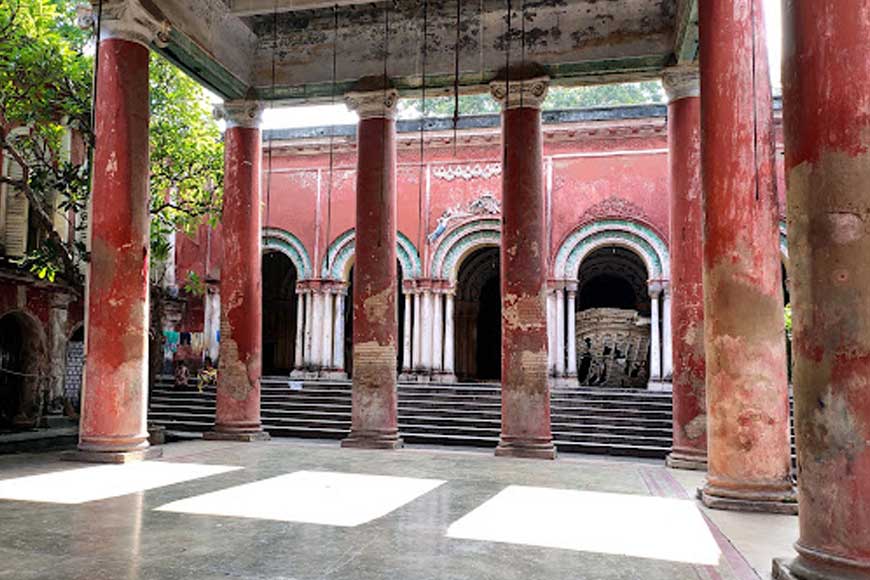
Ask around for Madanmohantala Street, and once you enter it, the ‘dol mancha’ od Madanmohan is right in front of you, still the venue for a modest fair on Ras Purnima, the full moon in September-October. Almost adjacent is the main temple to Madanmohan, which may seem like nothing much from the outside, but once you enter, your breath will be taken away by the sheer magnificence of the thakurdalan and natmandir, with a nearly 30-foot high roof. The arches and pillars are simply magnificent, too, and a wide staircase leads up to the place of worship on the first floor.
This stunning building was once the residence of Gokul Mitra (1724-1808), who made a fortune in the salt trade, and also ran a money-lending business, among his debtors the Bishnupur Raj family of Bankura, from whom he is supposed to have acquired the idol of Madanmohan, who has since been worshipped here.
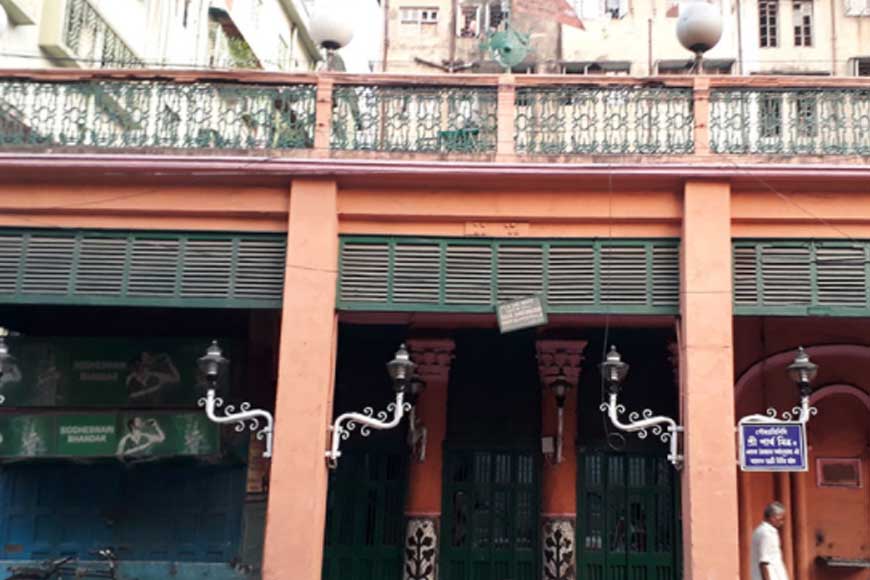
Point E - Siddheshwari Kali and Gopeshwar Shiva Temples
Only a few paces from Madanmohantala Street is Chitpur Road, where stands the Siddheshwari Kali temple, said to have been built by Abhaycharan Mitra, the grandson of ‘black zamindar’ Gobindaram Mitra. Though some scholars claim the man behind the temple was Banamali Sircar, the renowned businessman and philanthropist. Though not particularly impressive in its appearance, the temple is important as a marker of one of the city’s oldest continuously inhabited areas. According to some chroniclers, it was opposite this temple that Gobindaram built his ‘Black Pagoda’ in 1725. Famous 18th-century illustrations of Calcutta, such as Thomas Daniell’s print of Chitpur Road made in 1786, show the Black Pagoda and a smaller temple near it, quite possibly the Siddheswari Kali temple.
The print also marks out a veritable temple complex, complete with ‘pancharatna’, ‘nabaratna’ and ‘aatchala’ constructions, and though those temples no longer exist, a more modern temple complex still adjoins the Siddheshwari temple. The latter reportedly had a spire which rose 160 feet, but was destroyed by the cyclone of 1737.
Next week, we will take in the last two temples on this route and then progress in an entirely different direction.










